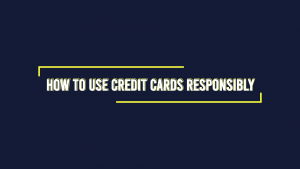How to Protect Your Credit Score While Pursuing Credit Card Rewards

What Is a Credit Freeze on Your Credit Report?
10/20/2022
Insider’s Guide to Authorized User on Credit Cards
11/03/2022 Enticing credit card rewards are one of many reasons to build a good credit score. With a great credit score, you can unlock access to top rewards credit cards.
Enticing credit card rewards are one of many reasons to build a good credit score. With a great credit score, you can unlock access to top rewards credit cards.
The allure of credit card rewards could prove too dangerous for some. But it’s possible to maintain a great credit score while taking advantage of the rewards opportunities on the table. Regardless of your comfort level with rewards credit cards, I’ll explore what you need to know about protecting your credit score while pursuing the rewards you desire.
What Are Credit Card Rewards?
Before we dive in, let me take a second to explain what I mean when I mention credit card rewards. Not all credit cards offer rewards, but some credit cards are specifically dubbed rewards credit cards because they offer some extra perks tied to your spending on the card.
Typically, a rewards card provides an opportunity to earn cash back, points, or miles based on your spending. Importantly, you can only earn rewards for purchases. Balance transfers and cash advances usually don’t count toward rewards opportunities.
Popular Types of Credit Card Rewards
In general, there are three types of credit card reward opportunities.
If you want to pursue credit card rewards, nothing is stopping you from opening multiple cards to target different types of rewards. But most cards only offer one type of reward.
Here’s a closer look at the three most common credit card reward programs.
Cash Back
A cash back rewards card is fairly self-explanatory. You’ll earn a percentage of cash back with each dollar you spend through the card.
In some cases, the cash back rewards are tied to specific categories. For example, you might earn 2% cash back on groceries but only earn 1% cash back on purchases at your favorite department store.
The good news is that there are dozens of cash back credit card options out there. With that, you can sort through the choices to find the card that will best reward you for your spending preferences.
Depending on the card, you might receive actual cash in your bank account. But it’s also common to receive the “cash back” as a statement credit on the credit card account. In either case, cash back credit cards are popular because you’ll easily earn a little cash on each dollar you spend.
Travel
Another popular type of rewards credit card offers travel rewards.
I love using travel rewards credit cards to stretch my travel budget further. Plus, most travel rewards credit cards include extra perks that come in handy for frequent travelers. For example, you might find cards with trip cancellation coverage or no foreign transaction fee.
As you spend with these rewards credit cards, you’ll accumulate points or miles to redeem for travel purchases. A few things you might be able to purchase with travel rewards points include flights, hotel stays, and unique experiences in your destination.
I’ve seen just how lucrative a travel credit card can be. With my first travel rewards card, I was able to pay for a substantial portion of my honeymoon to Scotland. Traveling is better when you know that your credit card company paid for the hotel!
Gift Cards
When credit cards allow you to accumulate points, you can often redeem those points for a variety of things. In some cases, you’ll have the option to redeem the points for gift cards at popular retailers.
If you enjoy shopping at particular stores, this could be a nice way to treat yourself. Or it could even stretch your budget a little bit farther at your most frequented stores.

Don’t Forget About the Bonus!
Regardless of which rewards category interests you most, there’s often an extra perk available through a welcome bonus.
Typically, a welcome bonus involves a substantial reward of points or cash back after meeting certain criteria. For example, you might receive a welcome bonus of $100 after spending $2,000 on your new credit card in the first three months.
The Risks of Credit Card Churning
For those who love credit card rewards, like me, the draw of a welcome bonus calls you to open more and more credit cards. In other words, the welcome bonuses encourage “credit card churning.”
According to Experian, credit card churning is “the practice of repeatedly opening and closing credit cards to earn cash, rewards points, or miles.”
It’s possible to hurt your credit score while churning credit cards. The risks include:
- Accidentally missing a payment: Payment history accounts for 35% of your FICO score. With multiple credit cards open, it’s easier to miss a payment, which would hurt your credit score.
- New credit inquiries: Although new credit inquiries only account for 10% of your FICO score, these can still have an impact on your score. That’s especially true if you are regularly applying for new credit cards.
- Lower average age of credit accounts: The average age of your credit accounts impacts your credit score. An older average account age leads to a higher credit score. As you open new cards, this lowers your average credit account age.
Each of these risk factors could lead to a lower credit score as a result of pursuing credit card rewards. However, it’s possible to manage these risk factors to minimally impact your credit score while maximizing your credit card rewards strategy.
How to Pursue Credit Card Rewards Responsibly
If you are interested in pursuing credit card rewards, you don’t have to destroy your credit score to do it. In fact, you’ll need to keep your credit score reasonably good to continue qualifying for the top rewards credit cards.
Ready to pursue credit card rewards responsibly? Here are some best practices to keep in mind.
Don’t Overspend to Get a Reward
The most important mistake to avoid when pursuing rewards is overspending. It’s never a good idea to overspend in pursuit of credit card rewards. That’s true no matter how enticing the welcome bonus is.
Of course, that doesn’t mean you can spend strategically. For example, you could pay major bills in advance to get your credit card rewards. Personally, I like to pay for major purchases like my healthcare insurance or my car insurance using my credit card if I’m trying to hit a spending requirement for a welcome bonus.

But don’t spend money that you wouldn’t otherwise spend just to get credit card rewards. After all, getting 1% cash back on your impulse purchase doesn’t make it worth the splurge.
Keep a careful eye on your spending when you switch over to a plastic rewards card. And always remember why the credit card company is offering the rewards in the first place. The bank wants you to overspend so that you have to pay them interest on your purchases. Don’t slide down the slippery slope of credit card debt.
If you struggle with overspending, consider setting up a budget. Or hold off on pursuing credit card rewards until you are comfortable managing higher credit limits.
Watch Your Credit Utilization Ratio
Your credit utilization ratio accounts for 30% of your FICO score, which makes it the second most important factor. With that, it’s critical to keep an eye on this ratio.
Credit utilization measures your credit usage against your revolving credit account limits. To determine your own credit utilization ratio, divide the outstanding balance by the credit limit. For example, let’s say that you have a credit card with a $1,000 credit limit. If you have a balance of $600, then your credit utilization ratio would be 60%.
In general, it’s best to keep your credit utilization ratio low. Most experts recommend keeping the ratio below 30%. If you have a higher credit utilization ratio, it could have a negative impact on your credit score.
Not sure how to lower your credit utilization ratio? There are two options. You can either pay off debt or increase your revolving credit limits. The snowball and avalanche debt repayment strategies offer two ways to pay off debt. But increasing your credit limit could be as simple as asking your credit card issuer.
Pay Off Your Credit Card Balance Every Month
You’ll need to pay off your credit card balance in full each month to avoid interest payments.
If pursuing rewards, it’s essential to avoid any interest charges. Otherwise, the notoriously high interest costs associated with most credit cards will outweigh any potential rewards you accumulated.
Depending on your preferences, you can pay off the balance at the end of the month. Or you can make payments throughout the month to keep your balance, and your credit utilization ratio, low.
Personally, I pay off my balance at the end of every month. But some credit card rewards seekers recommend paying off your credit card balance each week.

Make On-time Payments
Even if you cannot pay off your balance in full, make the minimum payment on time.
It’s critical to make on-time payments because your payment history accounts for 35% of your FICO score. With that, making on-time payments has a positive impact on your credit score.
With multiple credit cards in the mix, it’s all too easy to forget a payment here and there. Instead of letting life get in the way, take advantage of autopay. This helpful assistance from technology means you’ll never forget a payment ever again.
Pay Attention to the Annual Fees
When it comes to rewards credit cards, you’ll usually encounter annual fees. Depending on the card, this hefty fee could range from under $100 to several hundred dollars.
Although there’s nothing wrong with paying an annual fee, it’s important to be aware of the fee before signing up. You’ll need to run the numbers to ensure that the cost of the annual fee is outweighed by the rewards you anticipate.
For example, a $95 annual fee might be easily worth the cost if you receive a $100 travel credit every year. But you’ll need to dive into the specifics of each card to ensure you are getting an appropriate value for the cost.
Read the Fine Print
The fees associated with credit cards don’t stop with the annual fee. Instead, there are often countless other fees attached to the card. With that, it’s essential to read the fine print to confirm you understand all of the fees.
Additionally, the fine print will let you know whether or not you qualify for a particular reward. For example, some banks won’t issue more than one welcome bonus to an individual. If you are hoping to get a particular welcome bonus, make sure you qualify for it before signing up for the card.
Don’t Go After Too Many Rewards at Once
When you dive into the world of credit card rewards, you’ll find an extensive array of opportunities. It’s easy to want to sign up for multiple rewards cards at once. After all, who doesn’t want to get all of the rewards opportunities?

But the smart move is to sign up for one rewards card at a time. By opting for one rewards card at a time, you can focus your spending on the card to receive its welcome bonus. After that, you might decide to open another card.
If you sign up for too many cards at once, you might overextend your spending.
Monitor Your Credit
When seeking credit card rewards, it’s important to monitor your credit score and credit report.
The information on your credit report serves as the foundation for your credit score. With that, negative information on your credit report can lead to a bad credit score.
You can monitor both your credit score and credit report to spot potential problems immediately. When applying for a new credit card, you’ll likely see your score drop by a few points based on the hard credit inquiry. But major drops could indicate a mistake on your credit report.
If you spot a mistake, it’s possible to remove it by filing a dispute with the credit bureau. But you won’t know to start the process unless you regularly check your credit report.
The Bottom Line
Although you’ll need to stay vigilant, it’s absolutely possible to protect your credit score and pursue credit card rewards. If you see any negative changes in your credit report, hit pause on your credit card churning until you examine your credit report for the cause.




